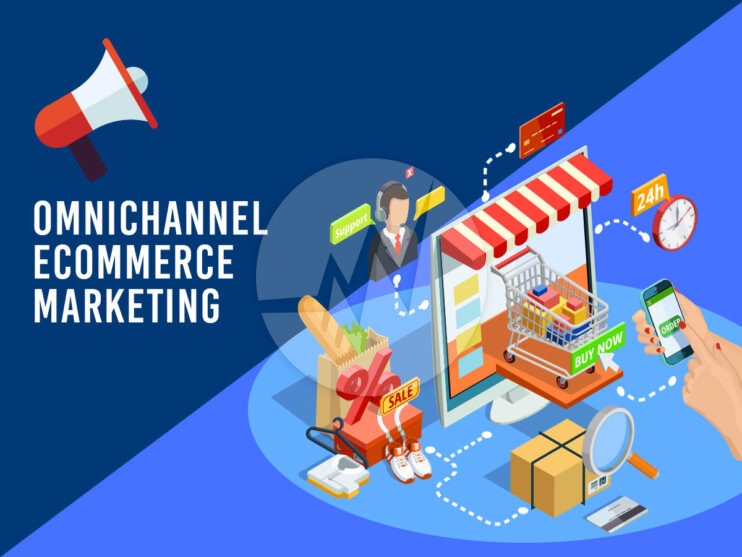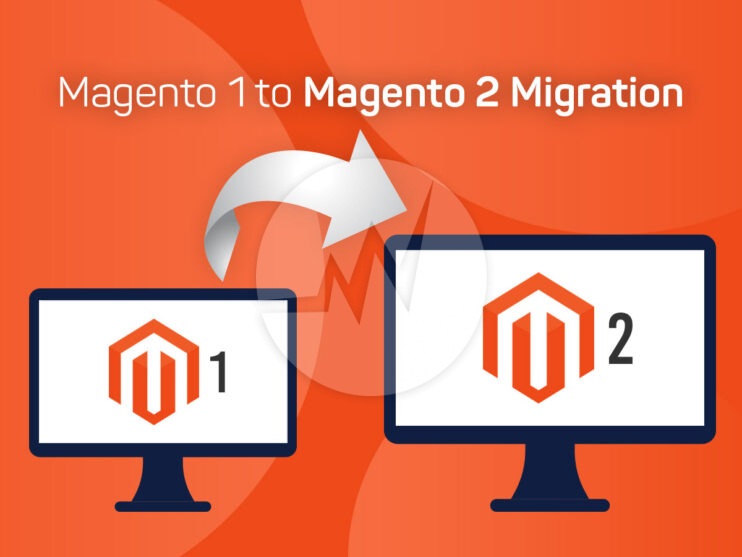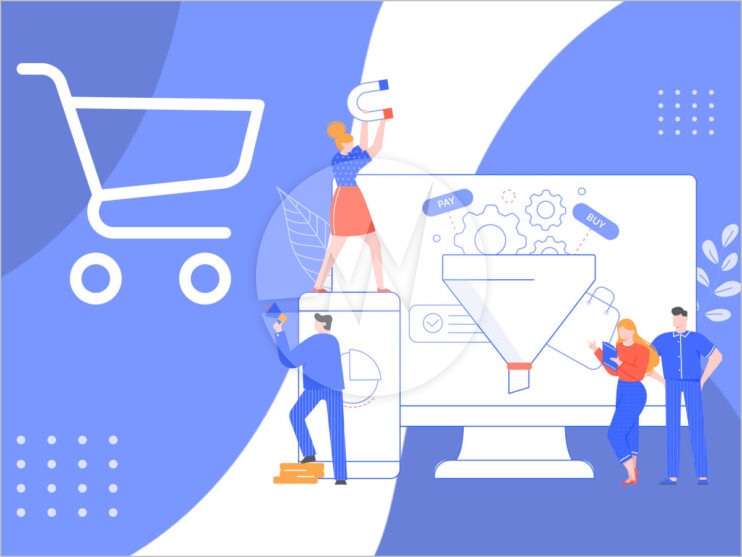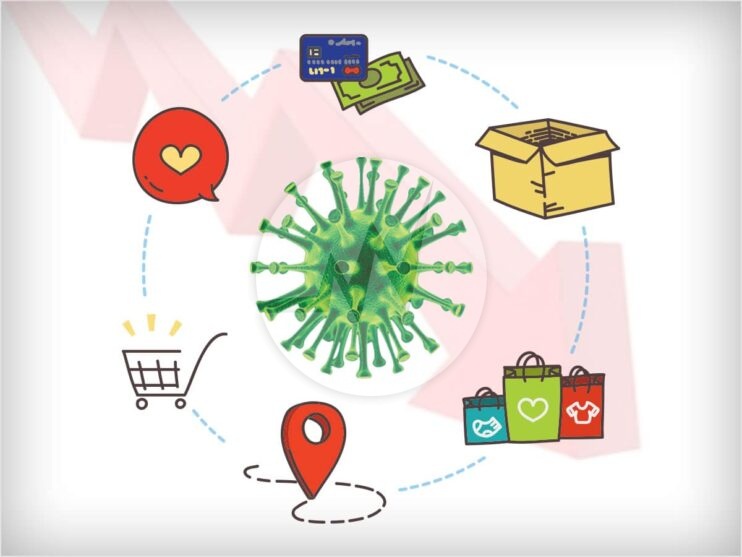Omnichannel Ecommerce Marketing Strategies – Provide Seamless User Experience for your Brand!

Multichannel, cross channel, omnichannel or no-line commerce? These and other trade terms confuse the increasingly complex brand management. In the course of digital change, companies have to re-sort their offline genome: Communication processes become digital and affect almost all areas of our lives. At the same time, society is developing that is almost always online and can be at any time. The consumer world of experience spans more and more points of contact with a company. Each contact point shapes the brand perception and ultimately influences the level of satisfaction of the consumer. You should, therefore, adopt the online communication strategy within the various sales channels to the changed needs of your customers: The various points of contact call for experiences. A challenge? – We consider this development much more than an enormous opportunity! Check out the guide on Essential Ecommerce Branding Strategy for Your ecommerce Business!
Physical and Digital Transformation Journey
Many consumers inform themselves in advance on the Internet, compare prices and search for detailed product information before they then buy the goods in the stationary shop. Via the website, the app, the newsletter, blog or the social media presence, the customer begins to get an impression of the brand or the product. On the other hand, many customers first find out about certain items in the store, try out products or get advice so that they can later be ordered on the couch at home using the tablet. Modern customers consume and get information everywhere: in the store, on the web and on the go – exactly where it suits them. Naturally and unconsciously, the consumer alternates between online and offline – old channel silos are broken up. During digital shopping journey, the user should be picked up at each touchpoint in a uniform manner and tailored to needs. The digital change and the technical possibilities raise customer demands enormously. Multichannel has ushered in the Revolution of the multi-channel strategy, omnichannel marketing exceeds the parallel product sales via several retail channels: Here, customer communication and the sales process take place across channels, to offer the end-user (s) a uniform, constant and customer-centred brand experience. The digital transformation, therefore, means one thing above all: Towards your customers and their needs! The information and purchase needs of your customers should, therefore, be recognized and served directly. What does that mean for you in the first step? – You have to Rethink!
Channel-Independent Customer journey
Neither consciously choose a specific sales channel when obtaining product information nor when buying. Throughout customer entire journey, the customer is channel-independent, consumes the content that suits to user best and, depending on user situation, decides at which points of contact shopping process should begin and end. The modern consumer knows best what customer likes and what he needs. Your job is to provide a solution with the right information to the customer, who will immediately recognize and fulfil interests – both online and offline? The focus of your communication strategy is no longer the product and the services, but the customer itself – as individually and personally as possible.
Experience the Omnichannel Ecommerce Culture and Strategize it!
For a successful implementation of a customer-centred communication approach, the boundaries between online and offline must merge: Implementing cross-channel communication strategies affect all areas of the company and must work in the digital world as well as in shops. Companies should therefore not only give the modern consumer the great possible flexibility but also offer their customers real-time interaction throughout the entire purchasing process. For many employees in brick-and-mortar retail, this accompanied by an enormous change: supplying parcels that can be collect (customers reserve or buy online and then collect their goods in a shop), process online orders from customers, order products that are not in stock in the online shop or answer questions about the online-offline service. For many employees, the internal move-in of digitization also means that strong competition felt to becoming in-store: they see omnichannel consumers and digitization as a threat to their employment. This could lead to a half-hearted occupation with the new service offerings and extensions in brick-and-mortar retail – a negative touchpoint arises. To prevent this, the employees in brick-and-mortar retail should be taken with them from the start: every employee should know that it forms one of many crucial points of contact on the customer journey of the discerning consumer. The customer wants to “experience” the product through brand approach and loyalty via different touchpoints: User expects individual information depending on usage situation.
Individual Shopping Experience – The way to the customer!
In the course of the digital transformation, your company can win if you adapt to the changed buying behaviour of your customers through the new technologies, no matter where they are. In the B2B area, in particular, you can increase your loyalty and sales with consistent, relevant and personalized customer experience. The individual shopping experience also represents a great opportunity for retailers: the customer who visits the brick-and-mortar store wants exactly what the customer may also miss online: personal advice, customer-oriented service, clear (haptic) product selection and an individual, pleasant shopping experience! How can this look in practice? The “digital changing room” is one of many examples that illustrate the new possibilities of the Omni world: These Omni changing rooms scan and recognize the registered customer as soon as they enter the shop. The customer has placed their goods in the digital shopping cart in the online store and can then try on their desired products immediately. The shop becomes a real “showroom”, in which products can be presented individually and tested by the customer. During the purchase in the store, the Omni shopper is then offered various delivery options. One of the many excellent options for interacting with the customer in real-time and individually addressing customer’s needs, which already identified on other different channels. The customer feels personally “picked up”, was able to deal flexibly with the product and the brand online and offline, saving time and effort across channels. By using location functions and personal data (for customers who allow this service), the modern consumer can be individually informed about offers that might be of interest to the customer at a certain time in a certain place. What remains is a positive brand experience that will influence consumers as they continue to work with the brand through customer reviews or recommendations.
Communication with Customer
As a result of the digital transformation, the retail sector shaped by a multitude of upheavals to which it must adapt its communication strategies. The Ecommerce industry is not exempt from these changes: whether the shopping cart filled and paid for at the end of the customer journey, it depends on the individual experiences during the customer journey. These have an impact on customer satisfaction – and that applies across industries! At every touchpoint, your target group has different information needs, which should be covered with consistent messages in line with the channel and depending on the usage situation. Communicating the same content across all channels no longer works: the “one-size-fits-all” phenomenon has had its day.
Touch points – Omnichannel Ecommerce Marketing
The modern shopping experience takes place everywhere! An interaction between employee and customer in the shop, a call to your customer hotline, getting to know your products during a trade fair or researching your website: the customer wants to deal intensively with your product, not the channel. Customer is looking for a stimulating, pleasant and needs-based brand experience. The different points of contact are accessible to your customers at any time and influence the subjective experience of the customer about your brand. Often it is also “small things” that make touchpoints a positive brand experience: the consumer who, for example, communicates negative user experience to the hotline employee and the hotline employee confronts the user with understanding, time-consuming and with compensation, can strengthen customer loyalty – despite previous negative intent. Both a responsive website and the website with optimal usability are among those crucial experiences that influence the overall result.
So, what is important at the end of the customer journey? The sum of the different experiences of the customer at each of your touchpoints.
Create an individual brand experience at every point of contact – their sum ultimately influences the purchase decision and assessment (recommendation) of your products.
Conclusion
Connect quality instead of quantity: Use the sales channels that suit you and your target group. It’s not about being represented everywhere, but where your customers are.
Omnipresent: Show, for example, your products and prices in all your channels in a uniform and complementary manner in order to be able to offer your customers seamless shopping experience and to avoid confusion
Utility Dependency: Do not tell your customer which channels to use and where to communicate – your customer finds best what they want to do, where they want and what they want. And there you have to be and use the strengths of each channel in order to optimally convey your content to the consumer.
Individual and Personal: Use customer data to develop a personalized shopping experience for the individual consumer and to be able to convey individual content to customer at every point of contact. create a personal brand experience for your customer!
Information-Oriented: Customers demand ever more precise information. In addition to detailed information about the product, factors such as price comparison, inventory or origin are also indispensable sources of information. At the same time, the quality of business advice should also be improved offline.
We provide end to end ecommerce solution with implementing perfect Omnichannel Marketing Strategy for your ecommerce store. We offer omnichannel ecommerce solutions, omnichannel ecommerce marketing, multichannel ecommerce solution, ecommerce website development, shopping cart development, online store development and much more.






